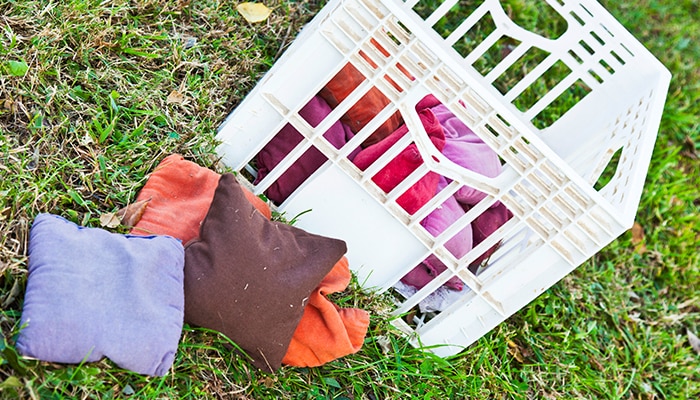While we believe that the books and resources recommended may be of value to you, keep in mind that these are suggestions only and you must do your own due diligence to determine whether the materials are appropriate and suitable for your use. PNC has no sponsorship or endorsement agreement with the authors or publishers of the materials listed.
HEALTHY ME

Bean Bag Balance
Children will use bean bags to explore balance and spatial relationships.

Lesson Objective
Children will explore balance and spatial relationships using bean bags.
Science
What You'll Need
- Wide masking tape – 1 roll
- Bean bags – 2 per child
What To Do
- Place two 12-foot lengths of masking tape on the floor in two straight lines about 3 feet apart.
- Tell the children that they will be using their balance to walk along the length of tape, placing one foot behind the other, without stepping off the tape. Tell the children that they will need to keep their balance (see Did You Know?).
- Divide the children into two groups with a single-file line at each taped line.
- Distribute one bean bag to each child.
- Have each child take a turn walking on the taped line while holding the bean bag in his or her hands.
- Demonstrate placing the bean bag in the middle of the line. Then, walk on the tape but step over the bean bag.
- Have the children take turns following these directions.
- Have the children walk on the tape again, then instruct them to squat down, pick up their bean bag, and proceed to the end of the tape, all without stepping off the tape.
- Distribute the second bean bag to each child.
- Demonstrate placing the bean bags about 5 inches apart on the tape. Then, walk on the tape and step over both bean bags in one step before proceeding to the end of the tape.
- Have the children take turns following these directions.
Resources
Home School Resources
Home educators: use these printable lesson PDFs to teach this lesson to your home schoolers. They're available in English and Spanish.
Content Provided By
Common Core State Standards Initiative – These lessons are aligned with the Common Core State Standards ("CCSS"). The CCSS provide a consistent, clear understanding of the concepts and skills children are expected to learn and guide teachers to provide their students with opportunities to gain these important skills and foundational knowledge [1]. Visit the CCSS


